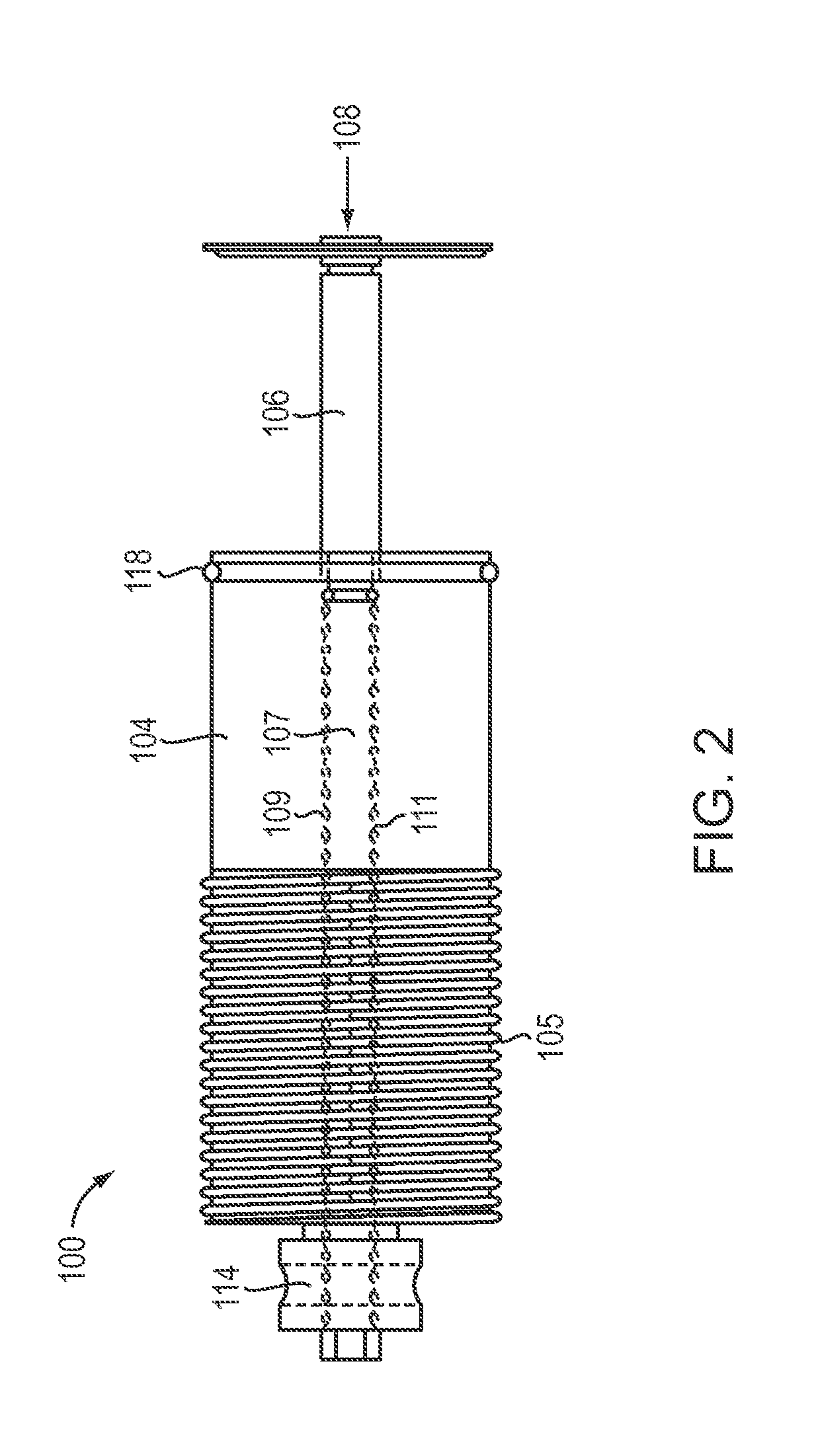Systems and methods for processing cells
a technology of cells and systems, applied in the field of systems and methods for processing cells, can solve the problems of cumbersome work, high cost of hoods, cumbersome extraction, etc., and achieve the effect of effectively fragmenting, efficient and cost-effectively extracting and collecting cells
- Summary
- Abstract
- Description
- Claims
- Application Information
AI Technical Summary
Benefits of technology
Problems solved by technology
Method used
Image
Examples
Embodiment Construction
[0028]To provide an overall understanding of the invention, certain illustrative embodiments will now be described, including systems and methods for processing cells. However, it will be understood by one of ordinary skill in the art that the systems and methods described herein may be adapted and modified as is appropriate for the application being addressed and that the systems and methods described herein may be employed in other suitable applications. All such adaptations and modifications are to be considered within the scope of the invention. Furthermore, it is to be understood that the features of the various embodiments described herein are not mutually exclusive and can exist in various combinations and permutations.
Tissue Mincing Tool
[0029]FIG. 1 schematically depicts a tissue mincing tool 10 according to one embodiment of the invention. The tissue mincing tool 10 includes a compartment 12 within which a tissue sample can be received and be initially housed, and a sterile...
PUM
| Property | Measurement | Unit |
|---|---|---|
| pore size | aaaaa | aaaaa |
| pore size | aaaaa | aaaaa |
| pore size | aaaaa | aaaaa |
Abstract
Description
Claims
Application Information
 Login to View More
Login to View More - R&D
- Intellectual Property
- Life Sciences
- Materials
- Tech Scout
- Unparalleled Data Quality
- Higher Quality Content
- 60% Fewer Hallucinations
Browse by: Latest US Patents, China's latest patents, Technical Efficacy Thesaurus, Application Domain, Technology Topic, Popular Technical Reports.
© 2025 PatSnap. All rights reserved.Legal|Privacy policy|Modern Slavery Act Transparency Statement|Sitemap|About US| Contact US: help@patsnap.com



